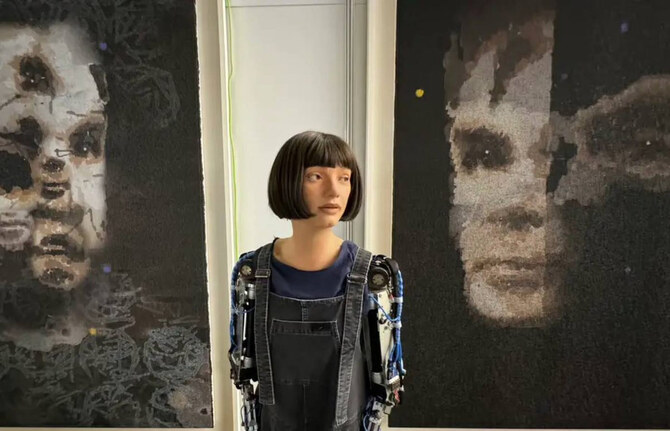In a historic event for art and technology, a portrait of English mathematician Alan Turing, created by Ai-Da, the world’s first ultra-realistic humanoid robot artist, sold for an impressive $1,320,000 at Sotheby’s Digital Art Sale in London on November 7. The artwork, titled A.I. God, significantly outperformed its pre-sale estimate of $180,000, reflecting the rising fascination with artificial intelligence in the art world.
Ai-Da, named after Ada Lovelace, the world’s first computer programmer, was conceived by art specialist Aidan Meller, in collaboration with AI experts from Oxford and Birmingham Universities. Standing at 2.2 meters (7.5 feet), Ai-Da uses AI algorithms to suggest ideas, select artistic styles, and even observe visual references using its built-in cameras. For A.I. God, Ai-Da studied a photograph of Turing, a visionary in computer science and AI, and produced the portrait with “muted tones and broken facial planes” — a nod, Meller explained, to Turing’s early concerns about AI and its potential impacts on society.
Ai-Da herself noted, “The key value of my work is its capacity to serve as a catalyst for dialogue about emerging technologies.” This dialogue extends to questions on the ethical and societal implications of AI’s rapid advancements, a conversation deeply relevant today as AI technology continues to develop at unprecedented rates.
With this sale, Ai-Da’s work has etched a place in the modern art scene, underscoring the growing intersection between AI and art while sparking conversations on the future role of technology in creative expression.




